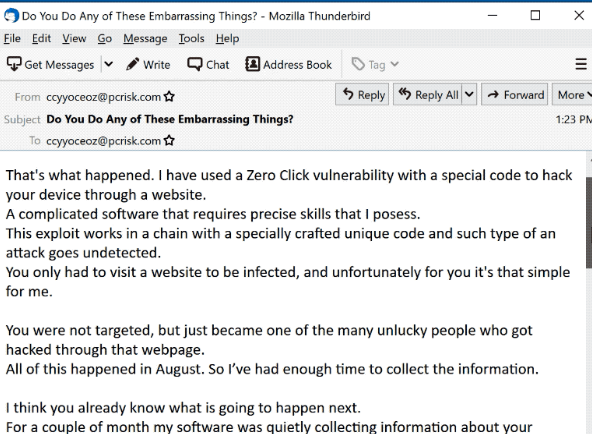What is the ‘I hacked your device’ Email Scam
‘I hacked your device’ email scam refers to a sextortion scam that aims to extort money from users. It’s a rather generic email scam that claims a video of users watching pornographic content will be released if they do not agree to pay $671 in Bitcoin. These scams started landing in users’ inboxes several years ago and since then, there have been different variations of them. Some threaten to expose videos, while others claim a bomb will be detonated if payment is not made. However, such emails are all scams.
According to the email, the sender is some kind of hacker who uploaded malware on an adult website. When you visited it, the malware supposedly downloaded onto your computer and gave the hacker complete access to your device. Supposedly, they were able to control your webcam, microphone, and screen. When you supposedly visited a pornographic website, the malware recorded you watching the videos. The dual video that the scammer claims to have supposedly shows the video you were watching and you watching it. Because the hacker was also supposedly able to steal your contacts, they threaten to send the video to all contacts if money is not paid. The requested sum is $671, to be paid in Bitcoins, and you have two days to make the payment.
What I’ve done?
I made a double screen video.
The first part shows the video you watched (you have good taste, yes … but strange for me and other normal people),
and the second part shows the recording of your webcam.You have 2 days (48 hours) to pay. (I have a special code, and at the moment I know that you have read this email).
If I don’t get bitcoins, I will send your video to all your contacts, including family members, colleagues, etc.
However, if I am paid, I will immediately destroy the video, and my trojan will be destruct someself.If you want to get proof, answer “Yes!” and resend this letter to youself.
And I will definitely send your video to your any 19 contacts.This is a non-negotiable offer, so please do not waste my personal and other people’s time by replying to this email.
If it hasn’t been made clear, this email is nothing more than a generic sextortion scam. There is no video of you, nor is your computer infected with anything. Sextortion emails are very common, and while they may vary in content, they’re all pretty much the same. They first scare the user with a nonexistent private video of them and then use demeaning language to shame users into paying. Scare tactics have been proven to be effective on some users, and payments have been made to these scammers’ accounts.
Users who receive sextortion emails in their inboxes can just delete them without paying attention to any of the contents as they will always be false.
How do scammers know users’ email addresses and even passwords?
Sextortion email campaigns may be operated by different scammers, but they all work in the same manner. If you have already received one sextortion scam email, you will probably continue to do so in the future because scammers purchase users’ email addresses from hacker forums. Email addresses end up on those forums after being leaked by unsafe services. For this reason, you should avoid using your primary email addresses to sign up for things like mobile games and potentially unsafe services. A leaked email address will start to surface in numerous data breaches once it has been exposed. You can use haveibeenpwned to check whether your email address has been leaked in the past. If it has been leaked, there isn’t much you can do, but at least you’ll know to be more careful with unsolicited emails.
We should mention that some sextortion emails also contain users’ passwords. This is effective at convincing users that an infection is indeed present on their computers. Because how else would the sender know their password(s)? The answer to that is actually quite simple, and it has nothing to do with malware on your computer. The same forums that sell email addresses also sell leaked passwords. If some service does not correctly secure users’ data and stores passwords in plain text, in case of a breach or a hack, those passwords would be exposed. They then get sold to cybercriminals who use them for their malicious campaigns, such as sextortion scams.
If users get a sextortion email that contains their password, they need to change it right away. Users should be aware that passwords must be difficult to guess and complex. Ideally, they would be made up of random combinations of capital and lowercase letters, numbers, and symbols. The password for each account also needs to be unique. If passwords are reused, it puts all accounts with that password at risk of unauthorized access. If users have trouble remembering their passwords, they should use a password manager.
What to do if you receive ‘I hacked your device’ email scam
Considering that ‘I hacked your device’ email is a sextortion scam, you can just ignore its contents and simply delete it from your inbox. You do not need to worry about your device being hacked or a video of you watching pornography being released. The entire email is false.
Unfortunately, if you have paid money to this scammer, there is no way to get it back.
Offers
Download Removal Toolto scan for 'I hacked your device' Email ScamUse our recommended removal tool to scan for 'I hacked your device' Email Scam. Trial version of provides detection of computer threats like 'I hacked your device' Email Scam and assists in its removal for FREE. You can delete detected registry entries, files and processes yourself or purchase a full version.
More information about SpyWarrior and Uninstall Instructions. Please review SpyWarrior EULA and Privacy Policy. SpyWarrior scanner is free. If it detects a malware, purchase its full version to remove it.

WiperSoft Review Details WiperSoft (www.wipersoft.com) is a security tool that provides real-time security from potential threats. Nowadays, many users tend to download free software from the Intern ...
Download|more


Is MacKeeper a virus? MacKeeper is not a virus, nor is it a scam. While there are various opinions about the program on the Internet, a lot of the people who so notoriously hate the program have neve ...
Download|more


While the creators of MalwareBytes anti-malware have not been in this business for long time, they make up for it with their enthusiastic approach. Statistic from such websites like CNET shows that th ...
Download|more
Quick Menu
Step 1. Uninstall 'I hacked your device' Email Scam and related programs.
Remove 'I hacked your device' Email Scam from Windows 8
Right-click in the lower left corner of the screen. Once Quick Access Menu shows up, select Control Panel choose Programs and Features and select to Uninstall a software.
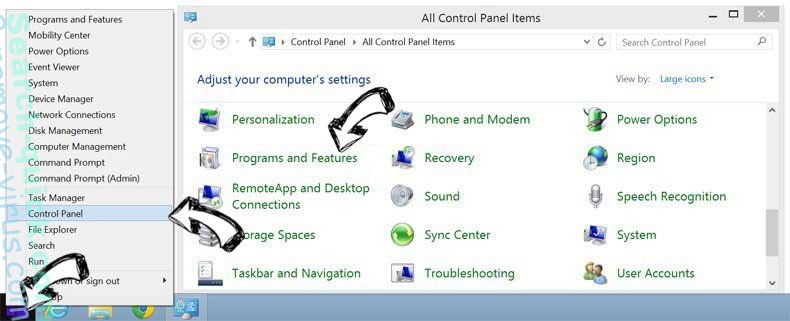

Uninstall 'I hacked your device' Email Scam from Windows 7
Click Start → Control Panel → Programs and Features → Uninstall a program.
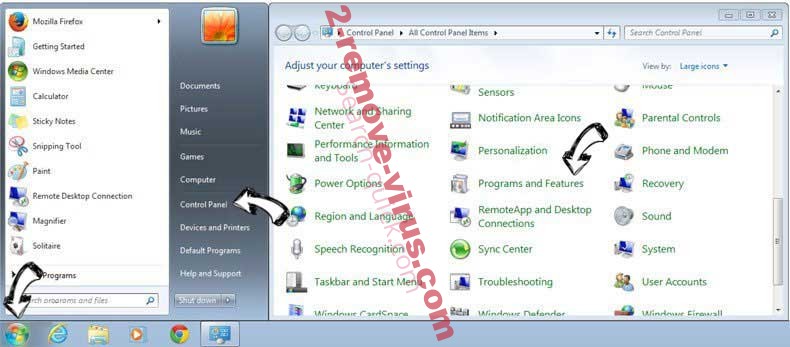

Delete 'I hacked your device' Email Scam from Windows XP
Click Start → Settings → Control Panel. Locate and click → Add or Remove Programs.
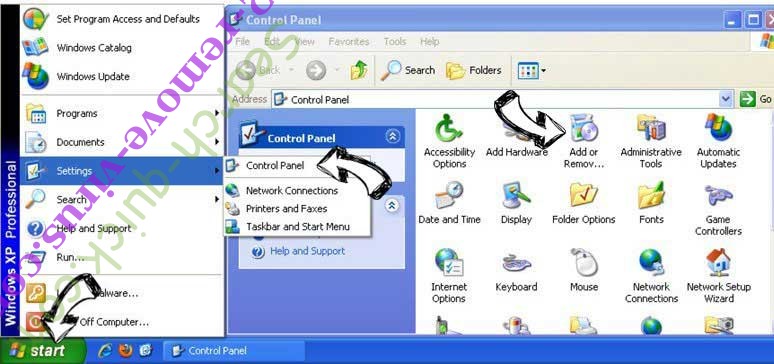

Remove 'I hacked your device' Email Scam from Mac OS X
Click Go button at the top left of the screen and select Applications. Select applications folder and look for 'I hacked your device' Email Scam or any other suspicious software. Now right click on every of such entries and select Move to Trash, then right click the Trash icon and select Empty Trash.
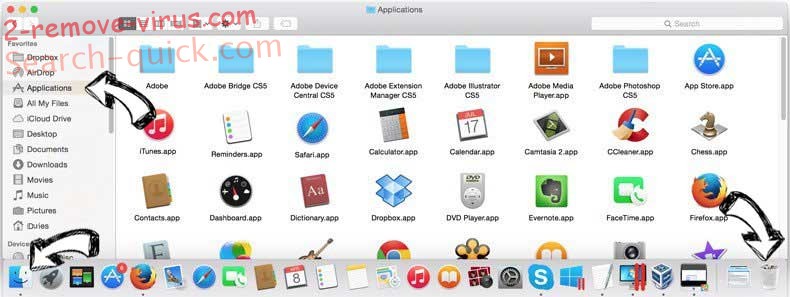

Step 2. Delete 'I hacked your device' Email Scam from your browsers
Terminate the unwanted extensions from Internet Explorer
- Tap the Gear icon and go to Manage Add-ons.

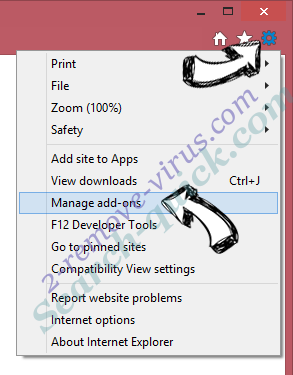
- Pick Toolbars and Extensions and eliminate all suspicious entries (other than Microsoft, Yahoo, Google, Oracle or Adobe)

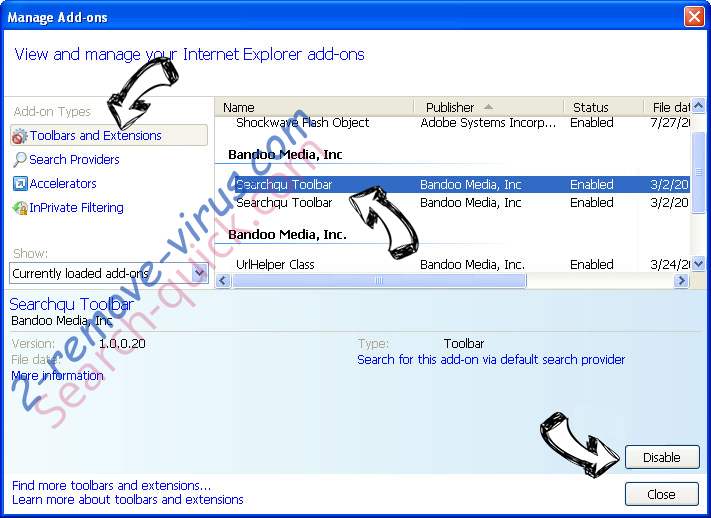
- Leave the window.
Change Internet Explorer homepage if it was changed by virus:
- Tap the gear icon (menu) on the top right corner of your browser and click Internet Options.

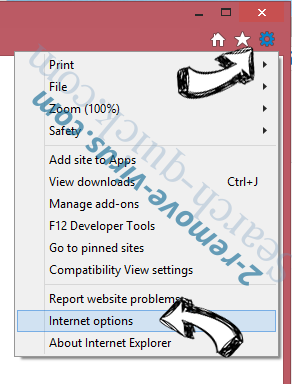
- In General Tab remove malicious URL and enter preferable domain name. Press Apply to save changes.

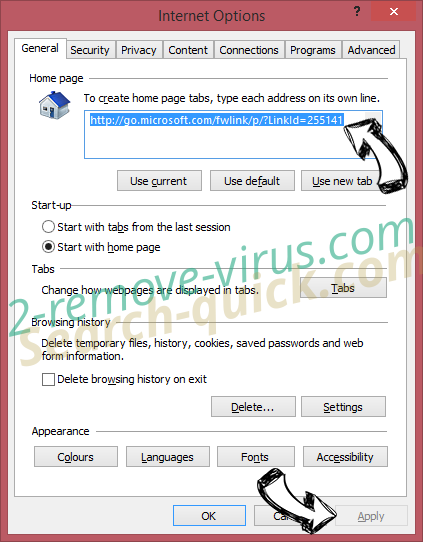
Reset your browser
- Click the Gear icon and move to Internet Options.

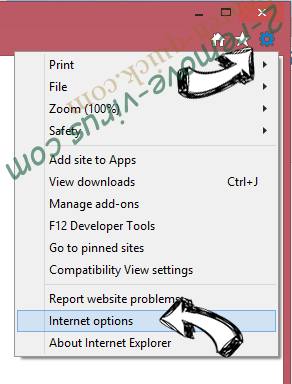
- Open the Advanced tab and press Reset.

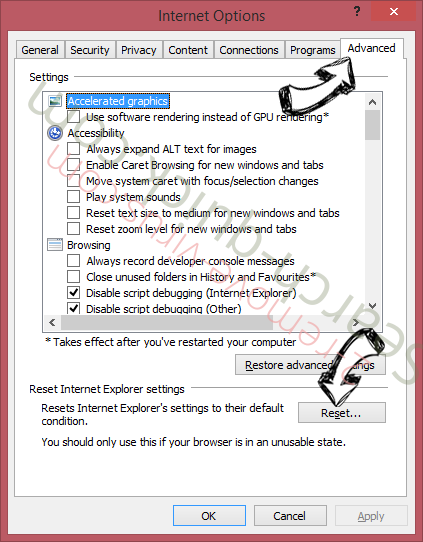
- Choose Delete personal settings and pick Reset one more time.

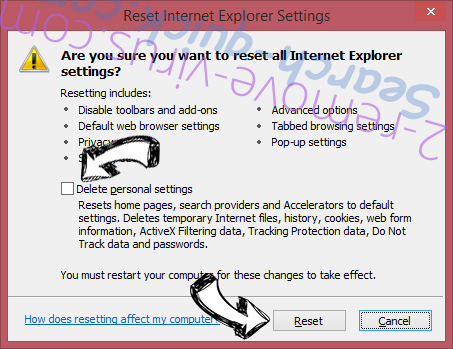
- Tap Close and leave your browser.

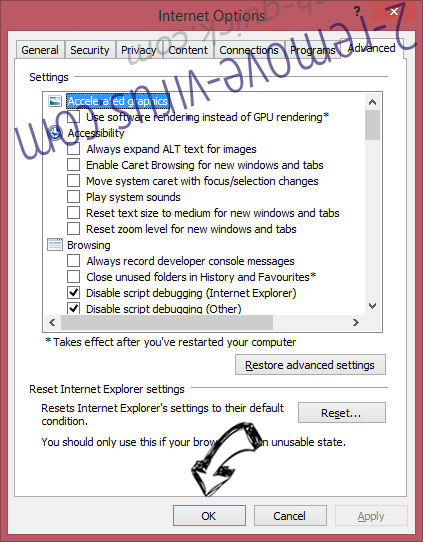
- If you were unable to reset your browsers, employ a reputable anti-malware and scan your entire computer with it.
Erase 'I hacked your device' Email Scam from Google Chrome
- Access menu (top right corner of the window) and pick Settings.


- Choose Extensions.

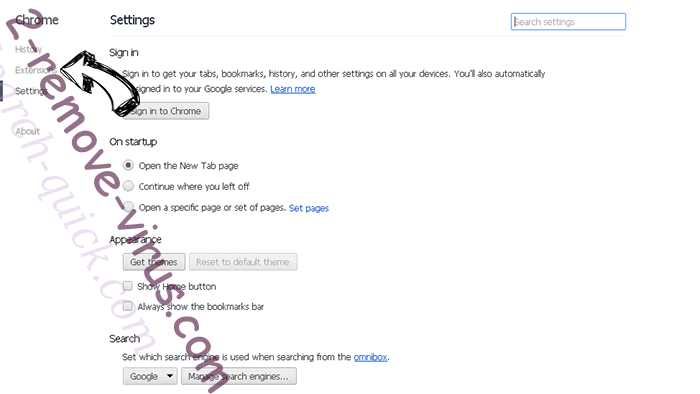
- Eliminate the suspicious extensions from the list by clicking the Trash bin next to them.

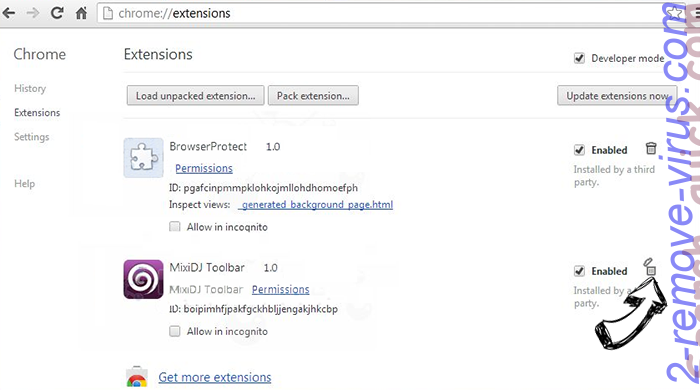
- If you are unsure which extensions to remove, you can disable them temporarily.

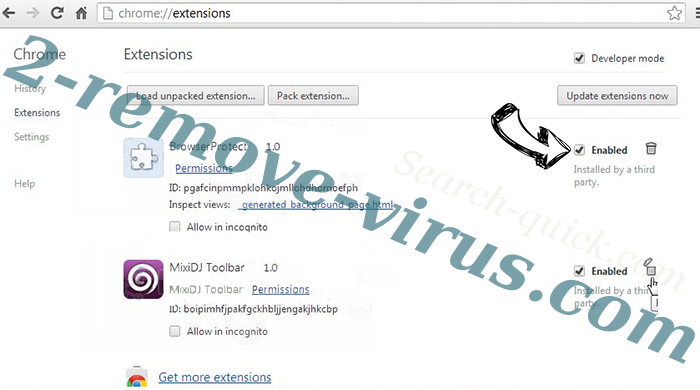
Reset Google Chrome homepage and default search engine if it was hijacker by virus
- Press on menu icon and click Settings.

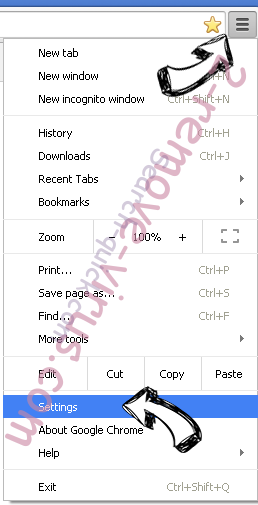
- Look for the “Open a specific page” or “Set Pages” under “On start up” option and click on Set pages.

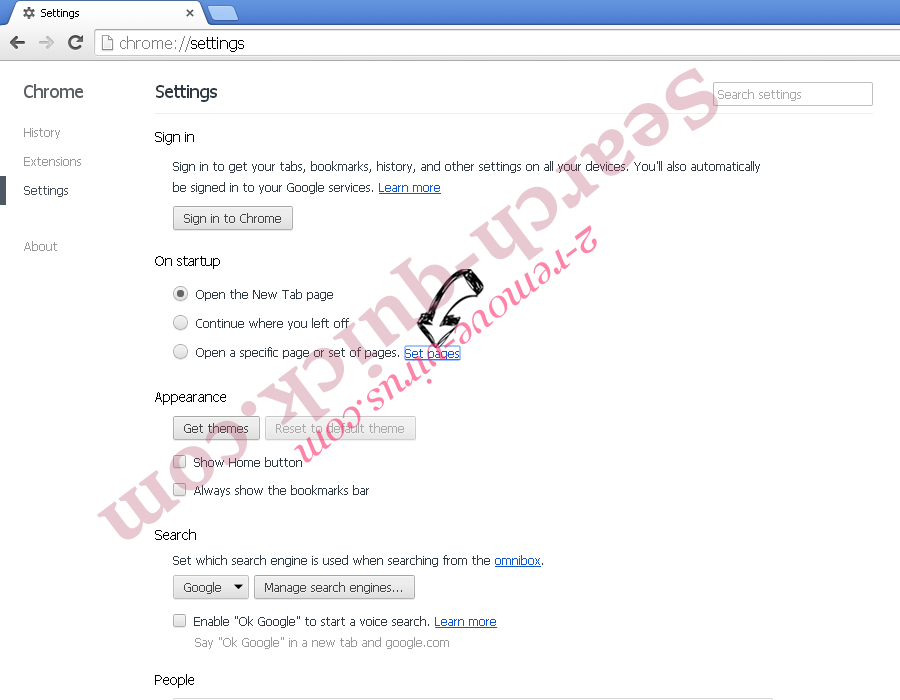
- In another window remove malicious search sites and enter the one that you want to use as your homepage.


- Under the Search section choose Manage Search engines. When in Search Engines..., remove malicious search websites. You should leave only Google or your preferred search name.

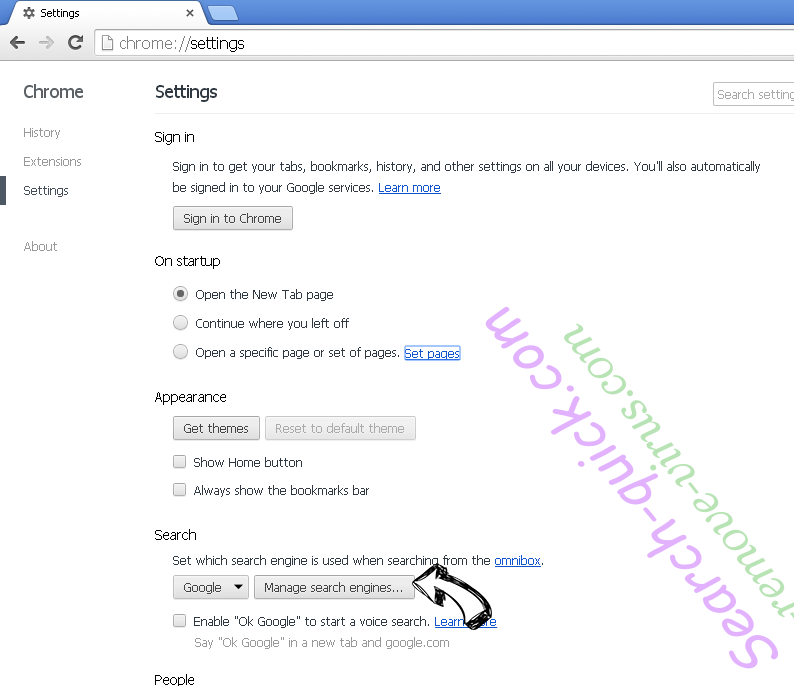

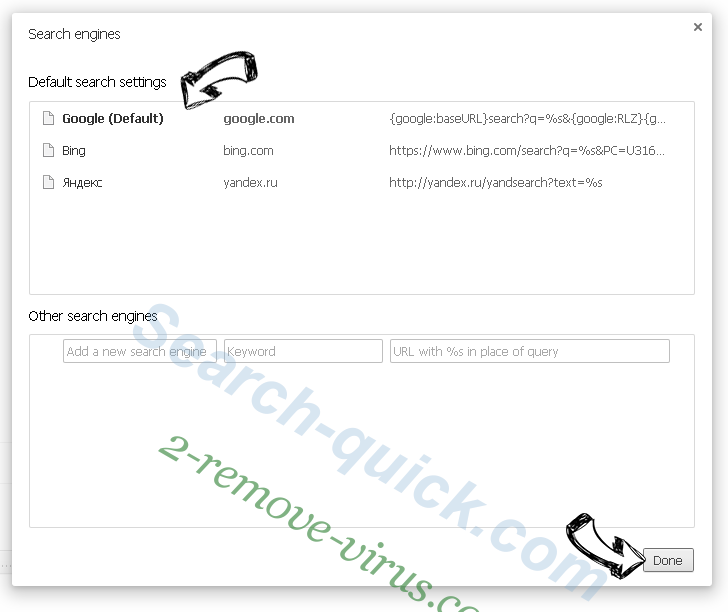
Reset your browser
- If the browser still does not work the way you prefer, you can reset its settings.
- Open menu and navigate to Settings.

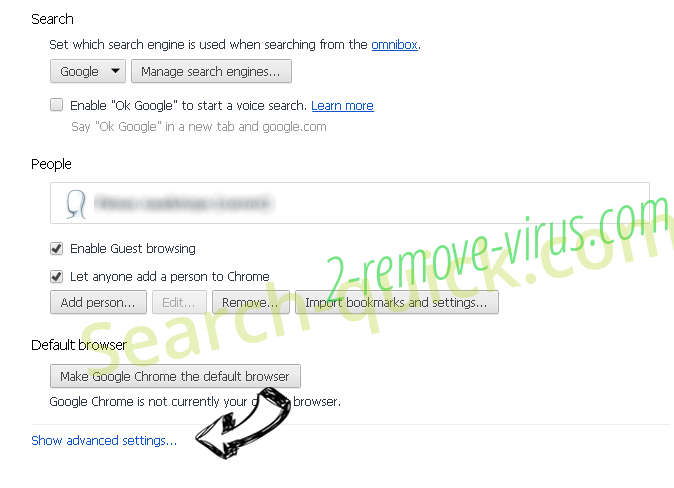
- Press Reset button at the end of the page.

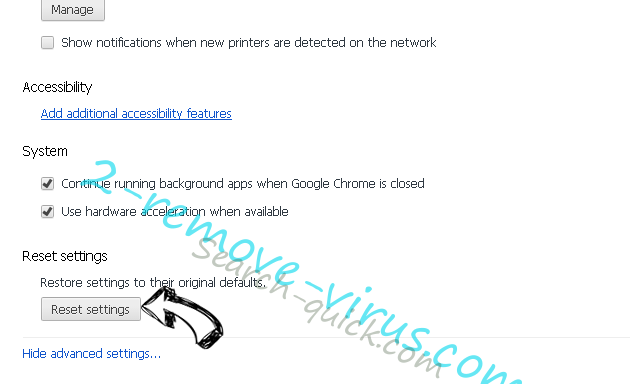
- Tap Reset button one more time in the confirmation box.


- If you cannot reset the settings, purchase a legitimate anti-malware and scan your PC.
Remove 'I hacked your device' Email Scam from Mozilla Firefox
- In the top right corner of the screen, press menu and choose Add-ons (or tap Ctrl+Shift+A simultaneously).


- Move to Extensions and Add-ons list and uninstall all suspicious and unknown entries.

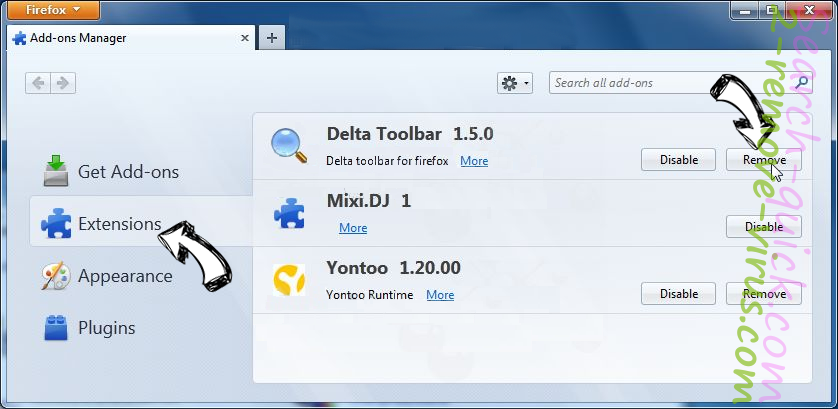
Change Mozilla Firefox homepage if it was changed by virus:
- Tap on the menu (top right corner), choose Options.

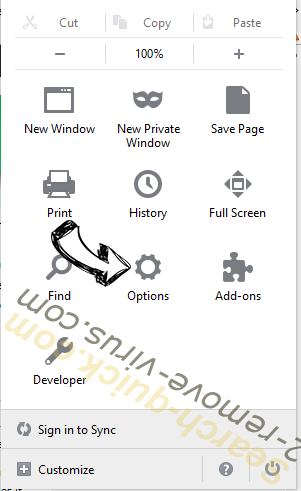
- On General tab delete malicious URL and enter preferable website or click Restore to default.

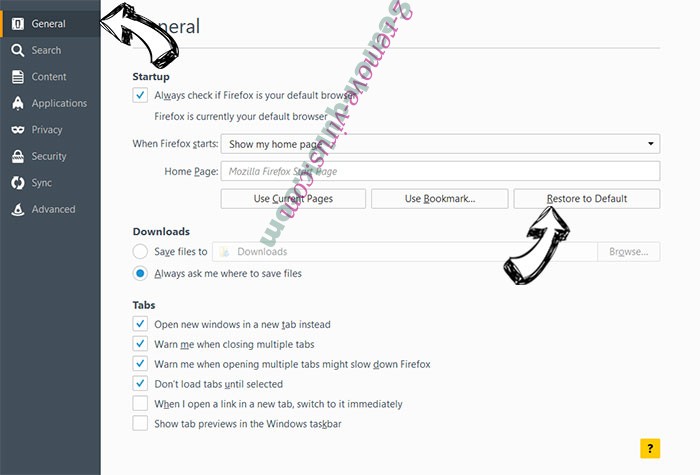
- Press OK to save these changes.
Reset your browser
- Open the menu and tap Help button.

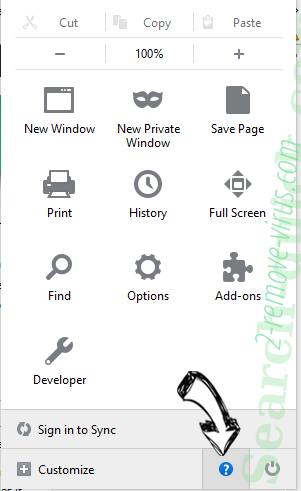
- Select Troubleshooting Information.


- Press Refresh Firefox.


- In the confirmation box, click Refresh Firefox once more.


- If you are unable to reset Mozilla Firefox, scan your entire computer with a trustworthy anti-malware.
Uninstall 'I hacked your device' Email Scam from Safari (Mac OS X)
- Access the menu.
- Pick Preferences.

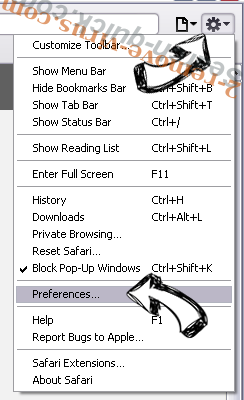
- Go to the Extensions Tab.

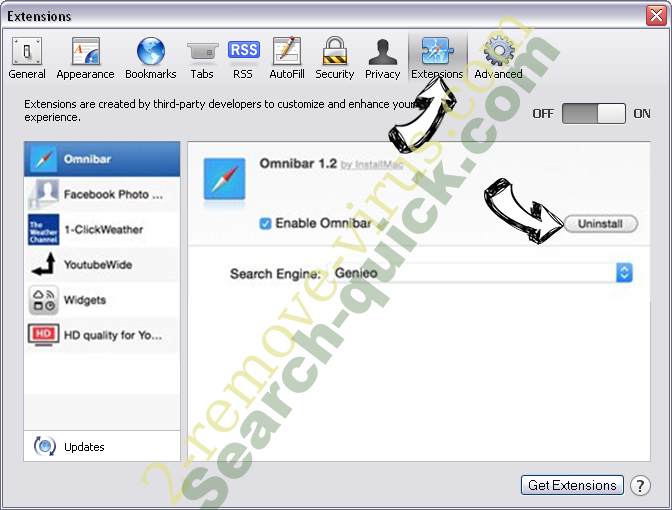
- Tap the Uninstall button next to the undesirable 'I hacked your device' Email Scam and get rid of all the other unknown entries as well. If you are unsure whether the extension is reliable or not, simply uncheck the Enable box in order to disable it temporarily.
- Restart Safari.
Reset your browser
- Tap the menu icon and choose Reset Safari.

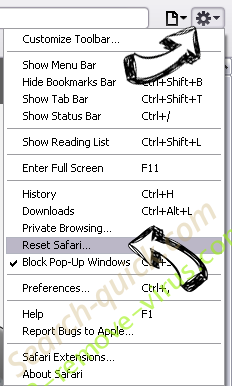
- Pick the options which you want to reset (often all of them are preselected) and press Reset.


- If you cannot reset the browser, scan your whole PC with an authentic malware removal software.
Site Disclaimer
2-remove-virus.com is not sponsored, owned, affiliated, or linked to malware developers or distributors that are referenced in this article. The article does not promote or endorse any type of malware. We aim at providing useful information that will help computer users to detect and eliminate the unwanted malicious programs from their computers. This can be done manually by following the instructions presented in the article or automatically by implementing the suggested anti-malware tools.
The article is only meant to be used for educational purposes. If you follow the instructions given in the article, you agree to be contracted by the disclaimer. We do not guarantee that the artcile will present you with a solution that removes the malign threats completely. Malware changes constantly, which is why, in some cases, it may be difficult to clean the computer fully by using only the manual removal instructions.
